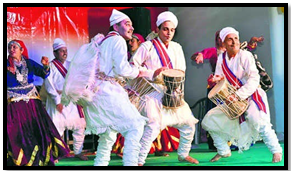HATTEES IN ST LIST
Why in News
- Recently, the Himachal Pradesh High Court temporarily halted the inclusion of the Hattee community in the ST list of the State.
Source: Tribune India
Judgement
- The court’s decision was based on concerns of “manifest arbitrariness” and “glaring unconstitutionality” in including SCs, OBCs, and dominant caste communities as part of the Hattee community in the ST list.
- The court also noted the need for responses from the State, Union governments, and other parties involved.
- The court expressed apprehension that granting tens of thousands of ST certificates could lead to complications if not reversed.
- The case involved petitions from Gujjars and Scheduled Castes associations challenging the Hattee community’s inclusion in the ST list of Himachal Pradesh’s Sirmour District.
About Hattis
- The Hattis are a community known for selling homegrown products at small markets called ‘haat’ in towns.
- Traditionally, Hatti men wear distinctive white headgear for ceremonial occasions.
- Their homeland spans the Himachal-Uttarakhand border in the Giri and Tons river basin, both Yamuna tributaries.
- The Tons river marks the boundary between the two states.
- Originally part of Sirmaur’s royal estate, Hattis in the Trans-Giri area (Himachal Pradesh) and Jaunsar Bawar (Uttarakhand) were separated in 1814.
- The Hatti community has two clans, Trans-Giri and Jaunsar Bawar, with similar traditions but a caste system. Bhat and Khash are upper castes, and Badhois are below them, discouraging inter-caste marriages.
- A traditional council called ‘khumbli’ governs the Hattis, akin to ‘khaps’ in Haryana, handling community matters.

 Source: Tribune India
Source: Tribune India

